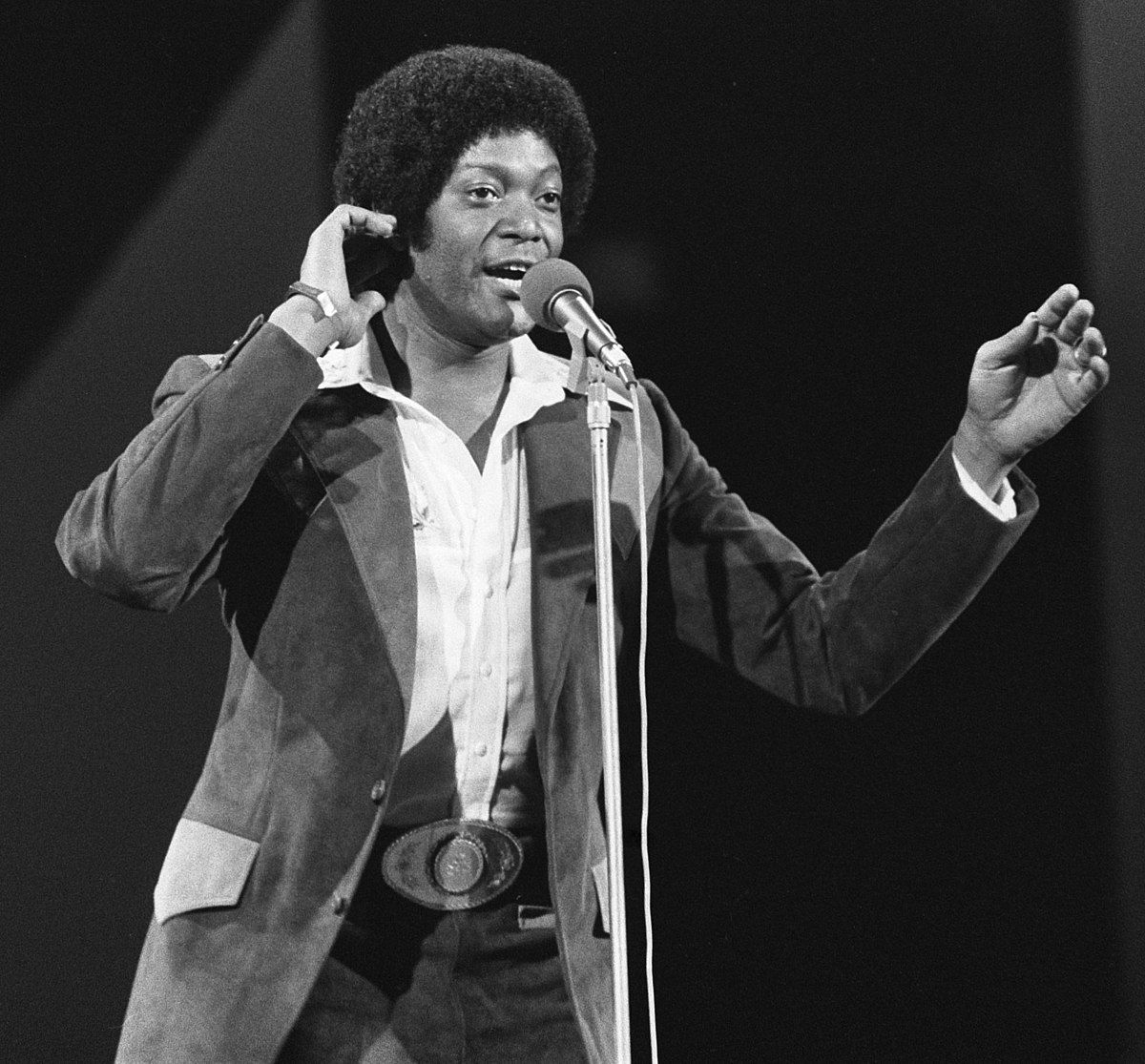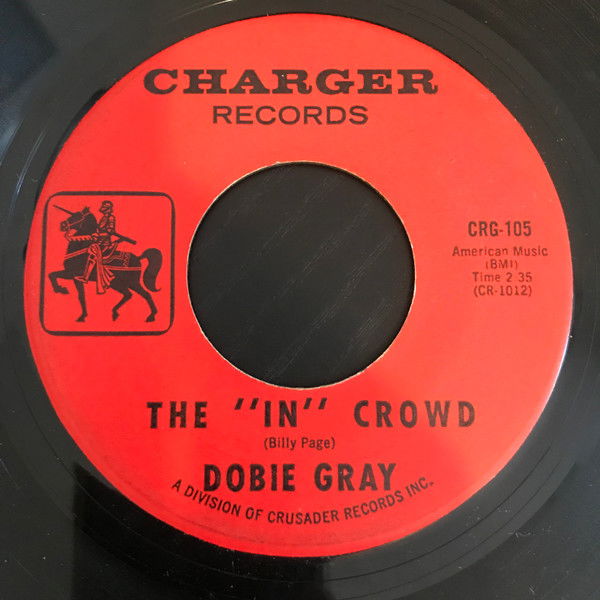DOBIE GRAY

Dobie Gray had two smash hits eight years apart before turning to Country music in the mid-1970s.
He was born in Simonton, Texas, on July 26, 1940. Depending on which source you believe, his birth name was either Leonard Victor Ainsworth or Lawrence Darrow Brown. The latter seems more likely as the Fort Bend County birth records list his parents as Jane and Jethro C. Brown. The family made their living as sharecroppers, while his grandfather was a Baptist minister.
Gray moved to Los Angeles in the early 1960s to pursue an acting career. He also sang to pay the bills and recorded for different labels under the names Leonard Ainsworth, Larry Curtis, and Larry Dennis. Sonny Bono directed the young man to the independent Stripe label, who suggested the professional name “Dobie Gray,” alluding to the popular TV sitcom, The Many Loves of Dobie Gillis.
In January 1963, his seventh single, “Look at Me,” on the Cordak label, debuted and peaked on the Billboard Hot 100 chart at #91. It was followed by Gray’s debut album, Look!, which was commercially unsuccessful.
By 1965, he was on the Charger label, where Fred Darian produced Gray’s recording of “The ‘In’ Crowd.” It became a solid smash, hitting #11 on the Rhythm & Blues chart, #13 pop, and #25 in the UK. Later that year, an instrumental version by the Ramsey Lewis Trio became an even bigger hit. Gray’s next single, “See You at the Go-Go,” also made the charts and was followed by an LP, Dobie Gray Sings for “In” Crowders That Go “Go Go.”
Gray spent the remainder of the ‘60s recording without success for the likes of Capitol, Downtown, and White Whale. He also worked as an actor, spending two-and-a-half years with the L.A. production of Hair. In 1970, Gray joined the band Pollution as a vocalist and drummer. They were managed by actor Max Baer, Jr. (Jethro on TV’s Beverly Hillbillies) and released a pair of soul-based psychedelic LPs on the Prophecy label. Gray also recorded demos with songwriter Paul Williams at Herb Alpert’s A&M Records.
In 1972, he signed with Decca to record an album in Nashville with songwriter-producer Mentor Williams (brother of Paul). One of its tracks was “Drift Away,” about the healing power of rock & roll music. While the single failed to set the Soul world on fire, it hit #5 on the pop chart. On July 5, 1973, “Drift Away” received a gold disc from the Recording Industry Association of America for sales of one million copies. Rock critic Dave Marsh also included “Drift Away” in his 1989 book, The Heart of Rock and Soul: The 1001 Greatest Singles Ever Made.
His follow-up single was the Country song “Lovin’ Arms,” which only made #81 R&B and #61 pop. It was, however, a top ten hit on the Adult Contemporary chart. Gray also released three albums—Drift Away, Loving Arms, and Hey Dixie—that failed to sell. Per Gray, the label was unsure of how to market a Black singer to the Country audience.
In the middle 1970s, Dobie Gray moved to Nashville. He signed with the Capricorn label and wrote songs with Troy Seals. While Gray continued to record, he increasingly shifted his focus to writing. His songs were recorded by the likes of Ray Charles, George Jones, Johnny Mathis, Charley Pride, and Don Williams. Gray also toured Europe, Australia, and Africa. He even performed in Apartheid-era South Africa, but only after its authorities met his demand that he be allowed to play for integrated audiences.
In 1981, Gray turned up on Premier Performance, a Contemporary Christian Music showcase on Word Records/Myrrh. He also recorded for Capitol, placing four singles on the Country chart. His biggest, “That’s One to Grow On,” reached #35 in 1986. He made frequent appearances at Charlie Daniels’ Volunteer Jam concerts, and lent his voice to a number of TV and radio jingles. Gray also recorded “Paradise Road,” which turned up in the 1988 movie Blind Justice. In 1997, he released an album, Diamond Cuts.
In 2000, disc jockey Kev Roberts of England’s Wigan Casino compiled The Northern Soul Top 500, based on a survey of the music’s fans. Dobie Gray’s 1966 recording of “Out on the Floor” came in at #2, second only to Frank Wilson’s ultra-rare 1965 Motown single, “Do I Love You (Indeed I Do).”
In 2003, Gray was featured on Uncle Kracker’s hit remake of “Drift Away.” It reached #9 on the Billboard Hot 100. On the Adult Contemporary chart, it spent an incredible 28 weeks at #1!
Dobie Gray, 71, died in Nashville of complications from cancer surgery on December 6, 2011.
Charted singles:
“Look at Me” (1963) Pop #91
“The ‘In’ Crowd” (1965) R&B #11, Pop #13
“See You at the Go-Go” (1965) Pop #69
“Rose Garden” (1969) Pop #119
“Drift Away” (1973) R&B #42, Pop #5
“Loving Arms” (1973) R&B #81, Pop #61
“Good Old Song” (1973) Pop #103 “Watch Out for Lucy” (1974) Pop #107
“If Love Must Go” (1975) Pop #78
“Find ‘Em, Fool ‘Em, Forget ‘Em” (1976) R&B #71, Pop #94
“You Can Do It” (1979) R&B #32, Pop #37

